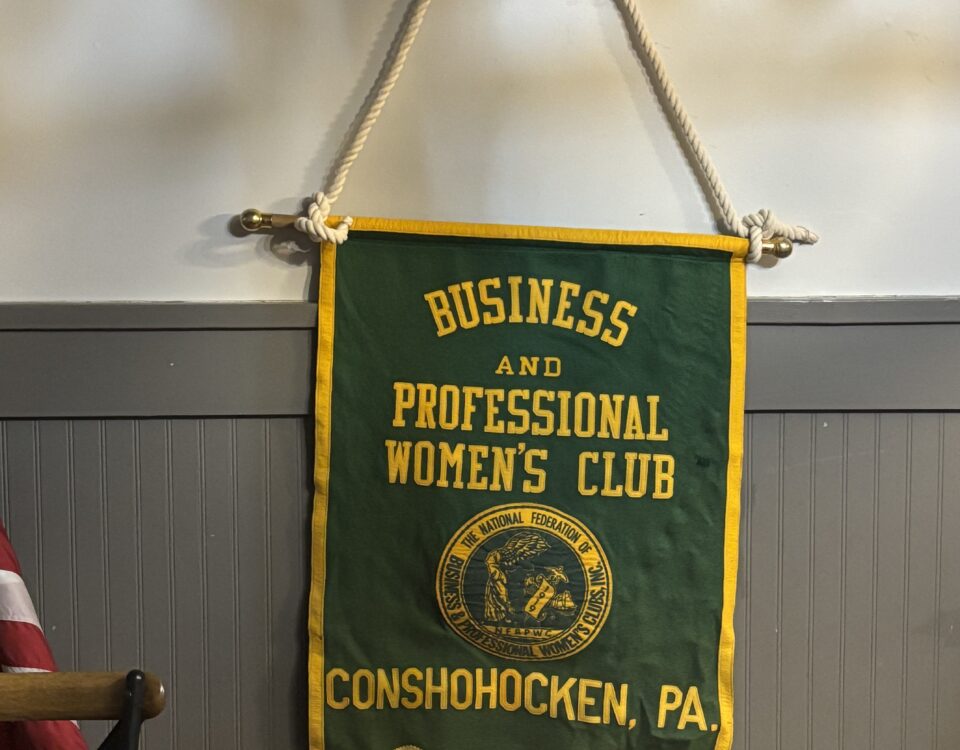
Archbishop Kennedy hosted The Hooters
November 25, 2014
Taking That Ride to the Other Side
December 6, 2014Talkin’ Music with Jack Who Shot Billy

Who Shot Billy
Stagger Lee Shot Billy
By Jack Coll
I always loved that trivia question “In the song Stagger Lee, who shot Billy?” Well Stagger Lee shot Billy, of course. The song “Stagger Lee’ was a number one hit for Lloyd Price back in 1959, it hung around on the Billboards Top 100 list for more than four months and stayed number one for four weeks.
Lloyd Price was a Louisiana guy with a strong soulful voice and had a dozen other hits with songs like “Personality”, and “I’m Gonna Get Married.” But Stagger Lee was, and always will be Lloyd Price’s signature song. It was two decades ago when the traveling Jack and Bob road show caught up to Lloyd Price, (The traveling Jack and Bob road show consist of Bob Frost and myself, sometimes we invite the Mrs., Donna and Joann, (They love the tribute bands, we recently took them to a Woody Guthrie tribute show and had to keep them from throwing their bra’s up on stage.) Without looking it up I think Bob and I caught up to Price in South Philadelphia at one of the Rib-fest Events held back in the early 1990’s.
The song “Stagger Lee” is one of those rare songs that can paint a picture a in the first couple of lines in the song;
The night was clear and the moon was yellow
And the leaves came tumbling down
I was standing on the corner
When I heard my bulldog bark
He was barkin’ at the two men
Who were gamblin’ in the dark
As it turns out the song “Stagger Lee” tells a great story going back more than a century, the song at one time was known as “Stagolee” among other variants and was a popular American folk song about the murder of Billy Lyons by “Stag” Lee Shelton in St. Louis Missouri at Christmas, in 1895. The song was first published in 1911 and was first recorded in 1923 by Fred Waring’s Pennsylvanians. After a quick half hour research on the song and the people involved, I think the “Wikipedia”, free encyclopedia, best explains the story of “Stager Lee,” so the next few paragraphs are a quote from the Wikipedia. (A little something I rarely do)
“The historical “Stagger Lee” was Lee Shelton, an African American pimp living in St. Louis Missouri in the late 19th century. He was nicknamed “Stag Lee” or “Stack Lee,” with a variety of explanations being given for the moniker: he was given the nickname because he went “stag”, meaning he was without friends; he took the nickname from a well-known riverboat captain called “Stack Lee”, or according to John and Alan Lomax, he took the name from a riverboat owned by the Lee family of Memphis called the Stack Lee, which was known for its on-board prostitution. He was well known locally as one of the “Macks”, a group of pimps who demanded attention through their flashy clothing and appearance. In addition to these activities, he was evidently politically active as the captain of a black “Four Hundred Club”, a political and social club with a dubious reputation.
On Christmas night in 1895, Shelton and his acquaintance William “Billy” Lyons were drinking in the Bill Curtis Saloon. Lyons was also a member of St. Louis underworld, and may have been a political and business rival to Shelton. Eventually, the two men got into a dispute, during which Lyons took Shelton’s hat. Subsequently, Shelton shot Lyons, recovered his hat, and left. Lyons died of his injuries, and Shelton was charged, tried and convicted of the murder in 1897. He was pardoned in 1909, but returned to prison in 1911 for assault and robbery, and died in incarceration in 1912.
The crime quickly entered into American folklore and became the subject of song as well as folktales and toasts. The song’s title comes from Shelton’s nickname, “Stag Lee” or “Stack Lee. The name was quickly corrupted in the folk tradition; early versions were called “Stack-a-Lee” and “Stacker Lee”; “Staglee” and Stagger Lee” also became common. Other recorded variants include “Stackerlee,” “Stack O’Lee,” Stackolee,” “Stackalee,” and Stagalee.”
A song called “Stack-a-Lee” was first mentioned in 1897, in the Kansas City Leavenworth Herald, as being performed by “Prof. Charlie Lee, the piano thumper.” The earliest versions were likely field hollers and other work songs performed by African-American laborers, and were well known along the lower Mississippi River by 1910. That year, musicologist John Lomax received a partial transcription of the song, and in 1911 two versions were published in the Journal of American Folklore by sociologist and historian Howard W. Odum.
The song was first recorded by Waring’s Pennsylvanians in 1923, and became a hit. Another version was recorded later that year by Frank Westphal & His Regal Novelty Orchestra, and Herb Wiedoeft and his band recorded the song in 1924. Also in 1924, the first version with lyrics was recorded as “Skeeg-a-Lee Blues, by Lovie Austin. Ma Rainey recorded the song the following year, with Louis Armstrong on cornet, and a notable version was recorded by Frank Hutchison in 1927.”
(The rest of the background and history of “Stagger Lee” can be found on Wikipedia)
The Wikipedia goes on to explain that Mississippi John Hurt recorded the song in 1928, followed with versions by Duke Ellington in 1927, Cab Calloway in 1931, and Woody Guthrie in 1941. In 1950, the song hit the Billboard R&B Charts when a version by Archibald, a New Orleans pianist who took the song to Number 10. Lloyd Price recorded his version of the song in 1958, and it exploded onto the numerous music charts in 1959. A little interesting fact is that Price recorded a toned-down version of the song for his appearance on Dick Clark’s American Bandstand when Price appeared in Philadelphia all those years ago.
So who else has recorded the song since the shooting more than a century ago, well funny you ask, Pat Boone, Ike and Tina Turner, James Brown, (A movie was released in August this year on James Brown, don’t miss it, I think you’ll be very surprised if not amazed at this guy’s life) Wilson Pickett took the song to number 22 on the U.S. pop charts, in 1971 Tommy Roe’s version of “Stagger Lee” went to number 25 on the Billboard Hot 100 and number 17 on the Canadian Singles chart.
Outside of Lloyd Price’s version, I love what the Grateful Dead did with the song. The Dead recorded a version of the tale which focuses on the fictionalized hours after the death of “Billy DeLyon,” when Billy’s wife Delia tracks down Stagger Lee in a local saloon and “she shot him in the balls” in revenge for Billy’s death.
The Clash covered the song in 1979, a few of the other artist who covered the song include The Black Keys whose version was titled “Stack Shot Billy.” Beck, David Bromberg, Bill Haley & His Comets, Neil Diamond, Fats Domino, Dr. John, Bob Dylan, The Isley Brothers, Jerry Lee Lewis, Trini Lopez, Johnny Rivers, Tom Rush, Sam the Sham, Neil Sedaka, Pete Seeger, Southside Johnny & The Asbury Jukes, Dave Van Ronk, Doc Watson, Amy Winehouse, and the McCoys along with dozens of other artists. The song has also been featured in a number of movies over the years.
Stagger Lee is perhaps the most talked about, and most recorded song about a murder in the history of music.
Lloyd Price’s version of how and why Stagger Lee shot Billy
“Stagger Lee”
The night was clear and the moon was yellow
And the leaves came tumbling down
I was standing on the corner
When I heard my bulldog bark
He was barkin’ at the two men
Who were gamblin’ in the dark
It was Stagger Lee and Billy
Two men who gambled late
Stagger Lee threw seven
Billy swore that he threw eight
Stagger Lee told Billy
I can’t let you go with that
You have won all my money
And my brand new Stetson hat
Stagger Lee went home
And he got his forty-four
Said, I’m goin’ to the barroom
Just to pay that debt I owe
Go Stagger Lee
(Instrumental Interlude)
Stagger Lee went to the barroom
And he stood across the barroom door
He said, nobody move
And he pulled his forty-four
Stagger Lee, cried Billy
Oh, please don’t take my life
I’ve three little children
And a very sickly wife
Stagger Lee shot Billy
Oh, he shot that poor boy so bad
Till the bullet came through Billy
And it broke the bartender’s glass
And there you have the saga of Stagger Lee, who knew it was that old, that complicated, and a true story, sort-of. The next time you have the oldies station on, and Lloyd Price comes on and claims “The night was clear and the moon was yellow” you’ll have a whole lot more to think about other than “I was standin’ on the corner.”
Next Week; another true story in a song, it’s pretty interesting!
This week’s “Talkin’ Music” has been brought to you by
The Conshohocken Boathouse &
Christopher Real Estate

